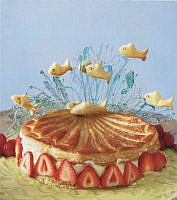Presidents' Passion for Music
Copyright © White House Historical Association. All rights reserved under international copyright conventions. No part of this article may be reproduced or utilized in any form or by any means, electronic or mechanical, including photocopying, recording, or by any information storage and retrieval system, without permission in writing from the publisher. Requests for reprint permissions should be addressed to books@whha.org
Abraham Lincoln could neither sing nor read music, but he loved music with a passion. He attended the opera at least thirty times while he was president, and when once criticized for these diversions during the turbulent Civil War years, he said frankly, "I must have a change or I will die." Inside the White House, music reflected America’s eclectic tastes in music: the nine-year-old piano prodigy, Tereas Carreno; the singing dwarf, Commodore Nutt; and the American Indian songstress, Larooqua, all performed on various occasions. Outside the White House, far into the night, masses sang George F. Root’s immortal "Battle Cry of Freedom," Dan Emmett’s "Dixie" and other tunes that revealed the soul of a people, who knew the powers of both tragedy and joy, defeat and victory. After the war, when Andrew Johnson took office in 1865, the tone of musical expression in the mansion changed through the lighthearted interests of the Johnson children and grandchildren. Described by some as "an old-fashioned, hospitable, home-like farm house," the White House under Andrew Johnson rang with children’s voices, games, good spirits, music, and especially dancing.
Landmark Era Performances, 1861-1865:
War songs and patriotic music often were performed at the Lincoln White
House. President Lincoln was especially fond of the Marine Band
performances in the White House and weekly concerts on the grounds.

President Lincoln reviews New York volunteer troops on Independence Day, 1861, before the White House.













